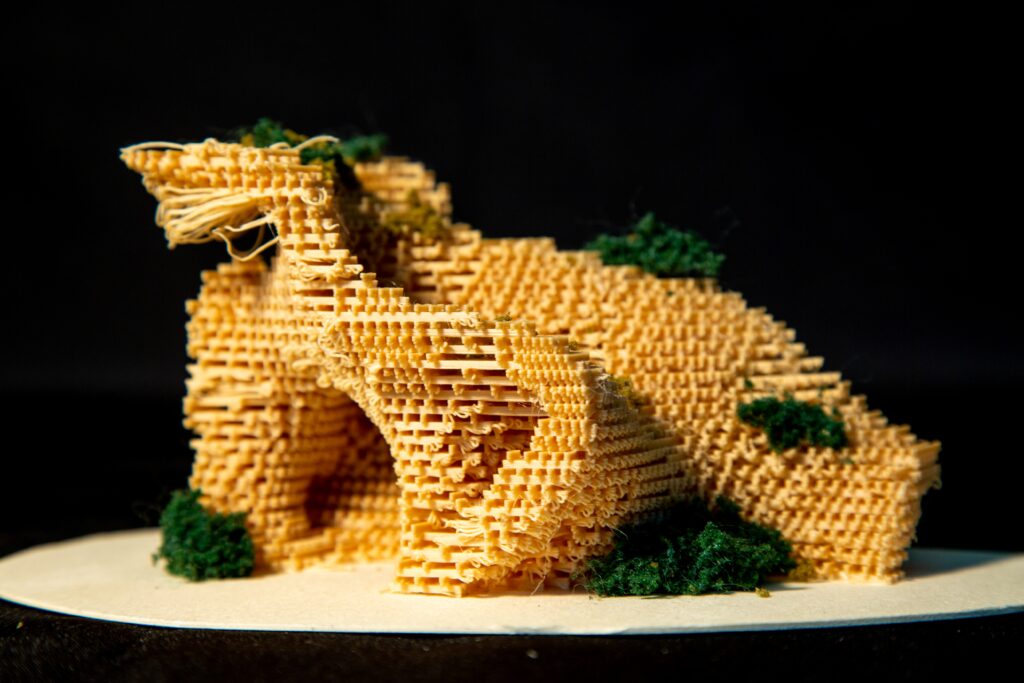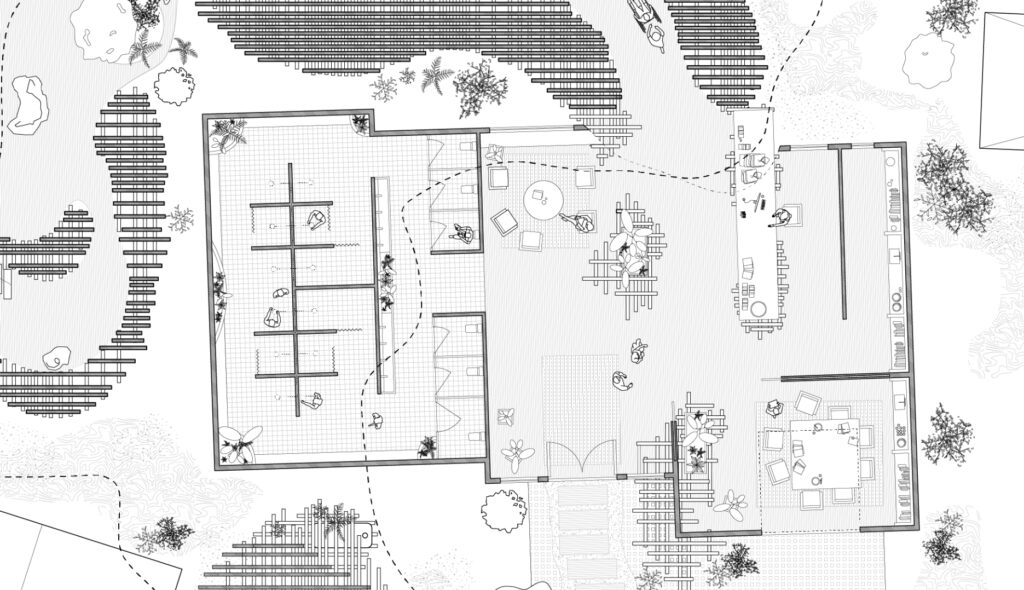

Alden Gendreau
David Rico-Gomez
California College of the Arts
Professor: Adam Marcus
Collaborating with the City of Fremont and the East Bay Regional Park System, the Northgate Neighborhood Association has initiated a project that proposes a new connection to Alameda Creek, rewilding and rehabilitating the suburban landscape. The Neighborhood Association has pooled their ADU (Accessory Dwelling Unit) rights in order to allow space for campGROUND(s), an interlocking wooden structure that supports burrowing owl habitat restoration modules as well as creating hiking and camping space in the communities own backyard.
Good morning campers, welcome to campGROUND(s)!
Through the collaboration with The City of Fremont and the East Bay Regional Park System, the Northgate Neighbors have initiated a project that proposes a new connection to the Alameda Creek through the re-wilding of suburbia. The Northgate Neighbors have pooled their ADU rights in order to allow space for campGROUND(s), an interlocking wooden structure that allows for both the burrowing of domestic-recreational spaces and burrowing owl modules. The artificial landscape grows out of the suburban backyard to accommodate hikers, campers, and day visitors via the connection to the Alameda Creek Trail at the rear of the site. This project explores how we can construct a natural environment while encouraging outdoor recreation localized in the suburban backyard
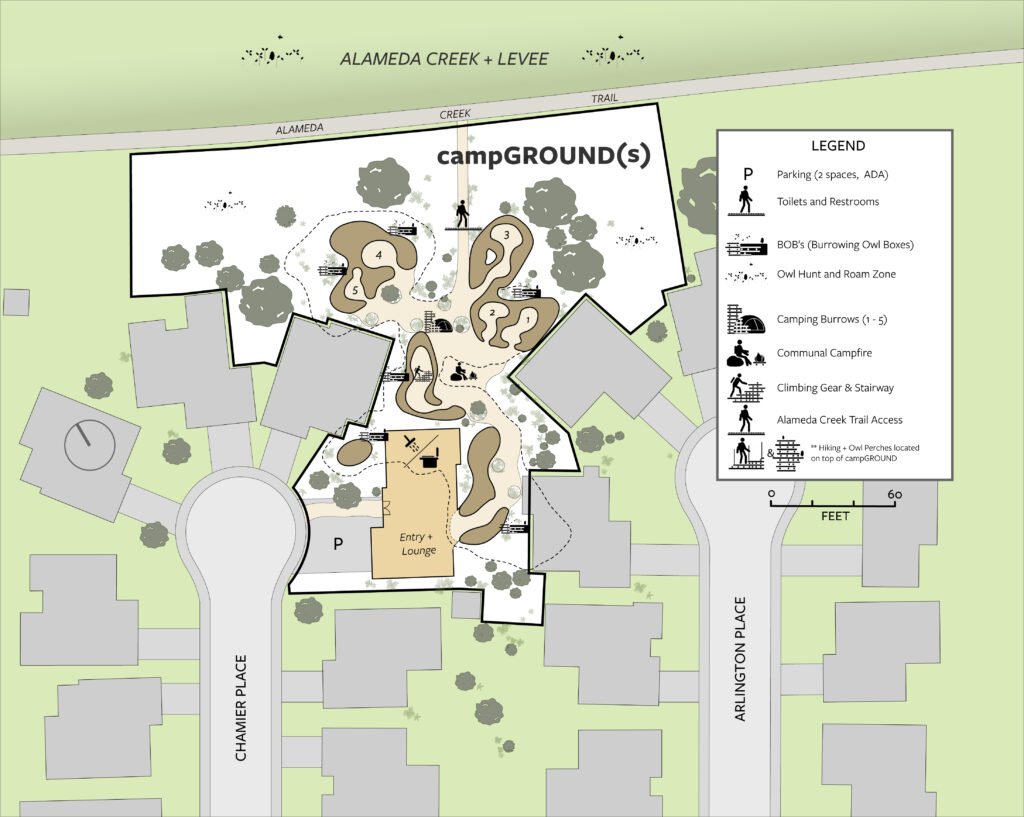
Burrowing Owl:
camp GROUND(s) accommodates space for our local focus animal: the Burrowing Owl. Burrowing Owls are small, growing 7-10 inches in height and are usually found in native grasslands that offer space to hunt and roam consuming insects, small mammals, snakes, frogs, and rodents. They nest in burrows that are taken over from ground squirrels or prairie dogs. The top of the nest acts as a perch for the owls to hunt or duct away and the interior of a burrow provides optimal thermal qualities for nesting.
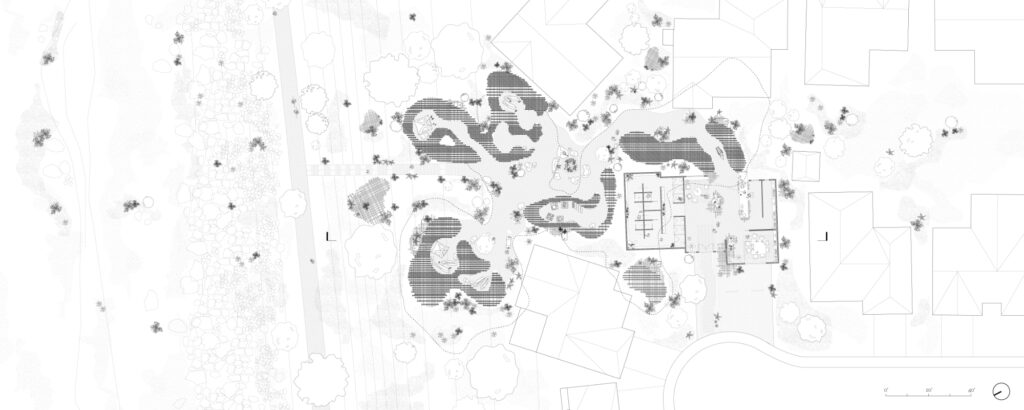
We incorporate these optimal habitation opportunities with the integration of Ceramic Burrowing Owl Boxes. These modules would act as a “ground” and habitable owl space to be placed within the building’sstructure. The ceramic BOB’s preserve the owl’s location on the ground level and the campGROUND pathway elevates the human up and away from the ground plane and into the structure in order to preserve ground space and vegetation for the burrowing owl.
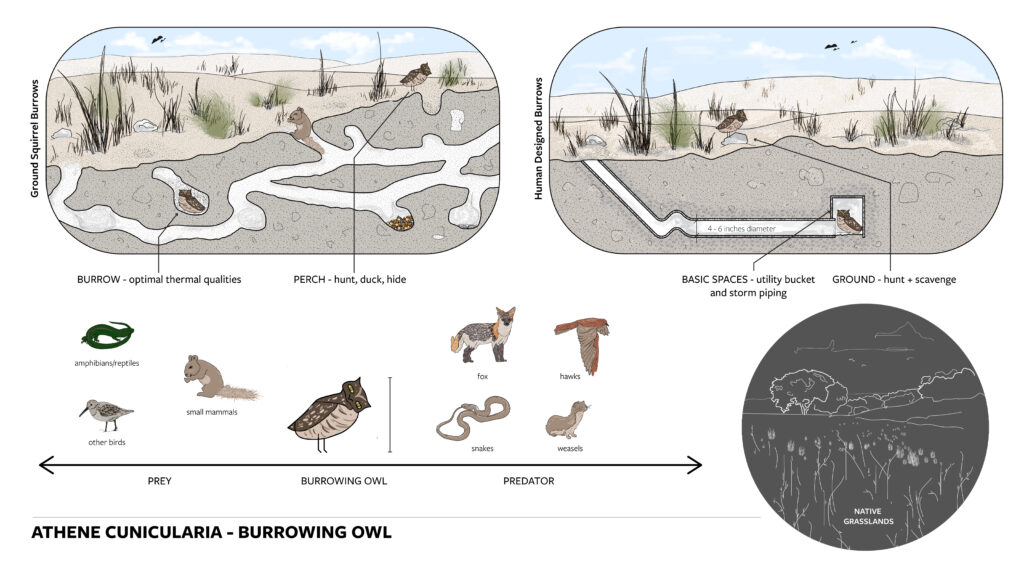
Artificial Landform:
campGROUND(s) is an artificial landform that serves as a catalyst for human and biological interaction. Made from dimensional lumber sourced from light-framing construction waste, the landform is a variably stacked lattice structure, changing in density in response to program and lighting. Sectionally, campGROUND(s) rolling undulations introduce hill conditions to the otherwise flat Fremont landscape, creating valleys and pockets for human interaction that includes walking, hiking, camping, and socializing around a central campfire.
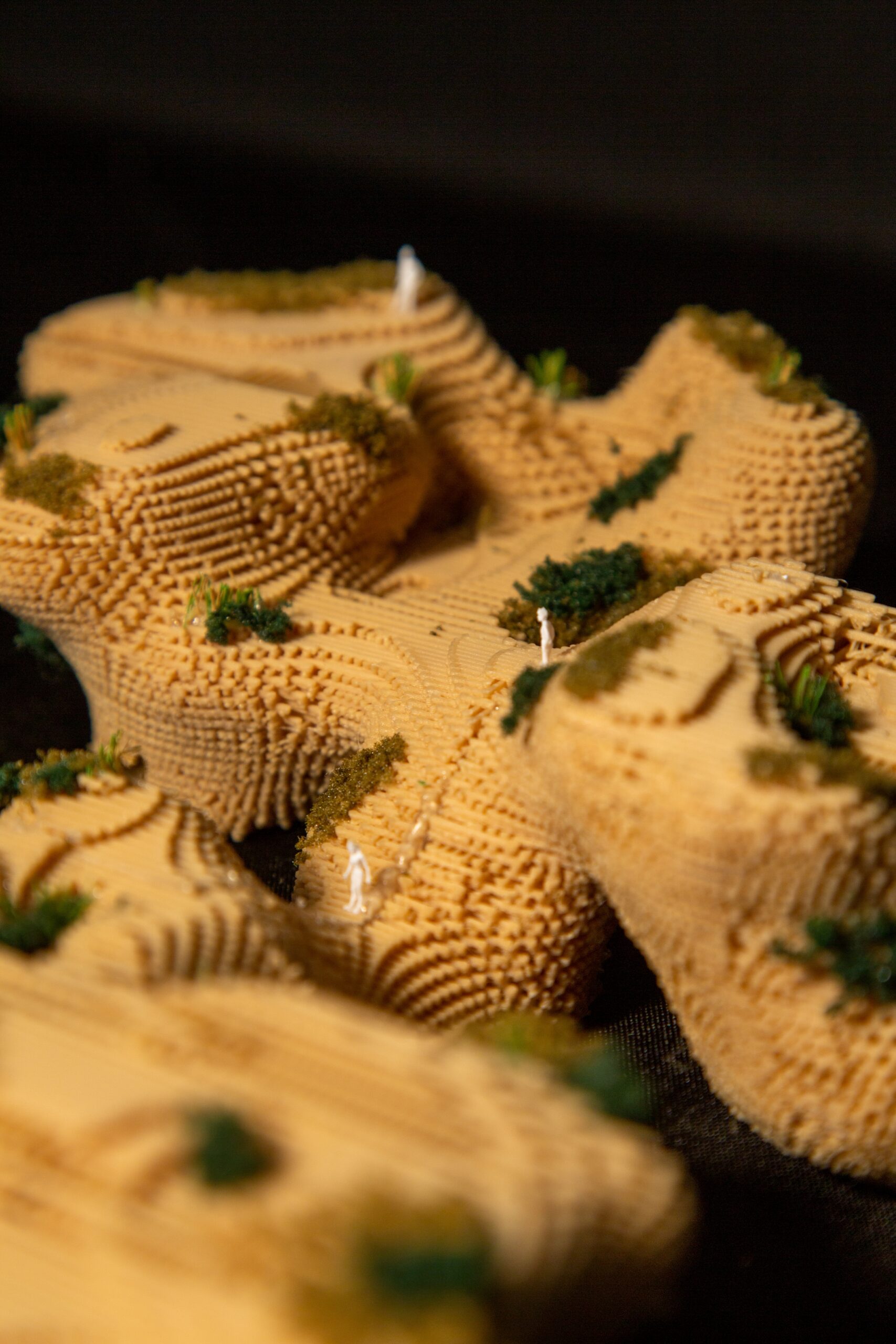
2 Types of Burrows:
“Domestic” spaces in the campGROUND(s) can be divided into two types of burrows at two different scales. The first are the BOB modules, designed for owl habitation. At the human scale, burrows are carved into the landform, digging their way deep into the lattice, creating shelters to be used in addition to the hiking trails above. Human burrows open into the space, towards common areas, while owl burrows face out and away from the form, towards the levee and surrounding wildlife.
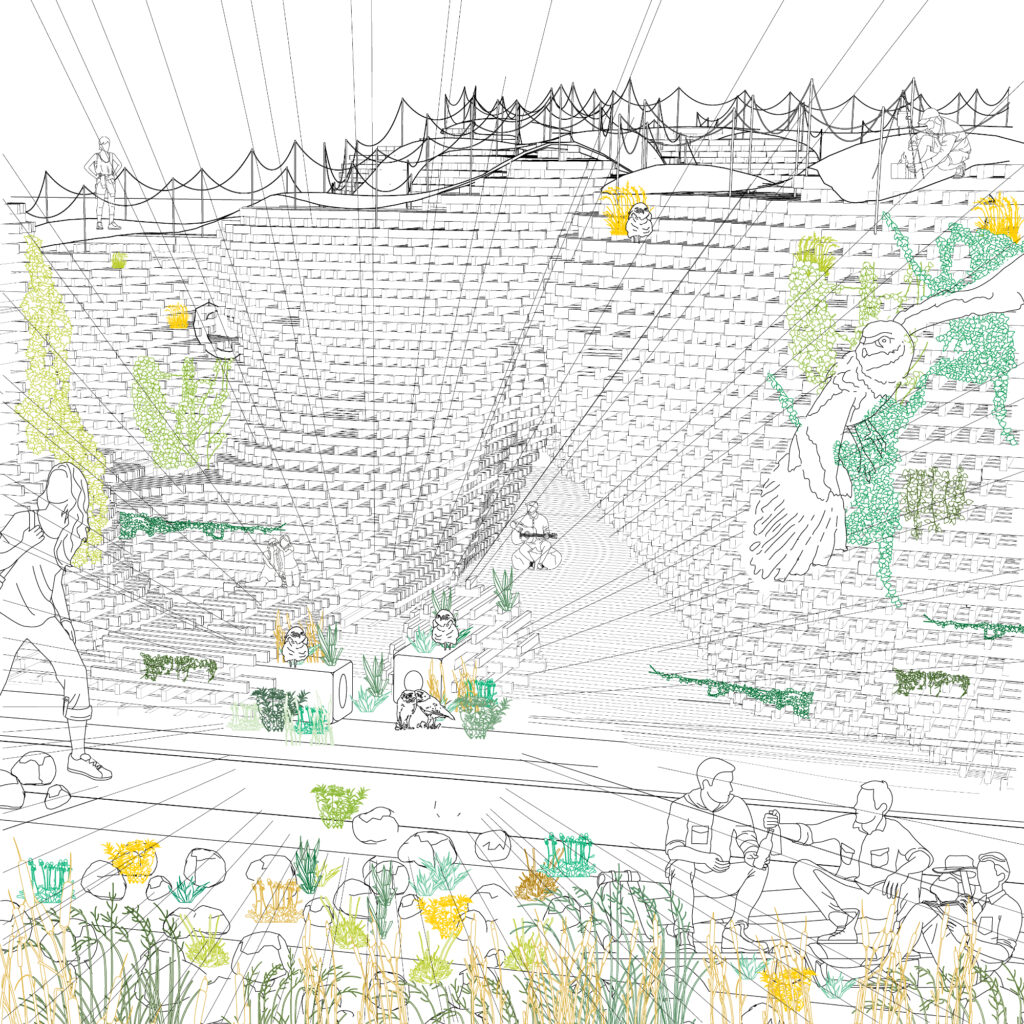
Central Communal Area:
The landform was generated to create key “natural features”; these spaces serve programmatic functions. The most important of these is the communal area created by the structure that is anchored by the central campfire. Campers can eat and socialize together around the fire, bonding over this new connection to wildlife.
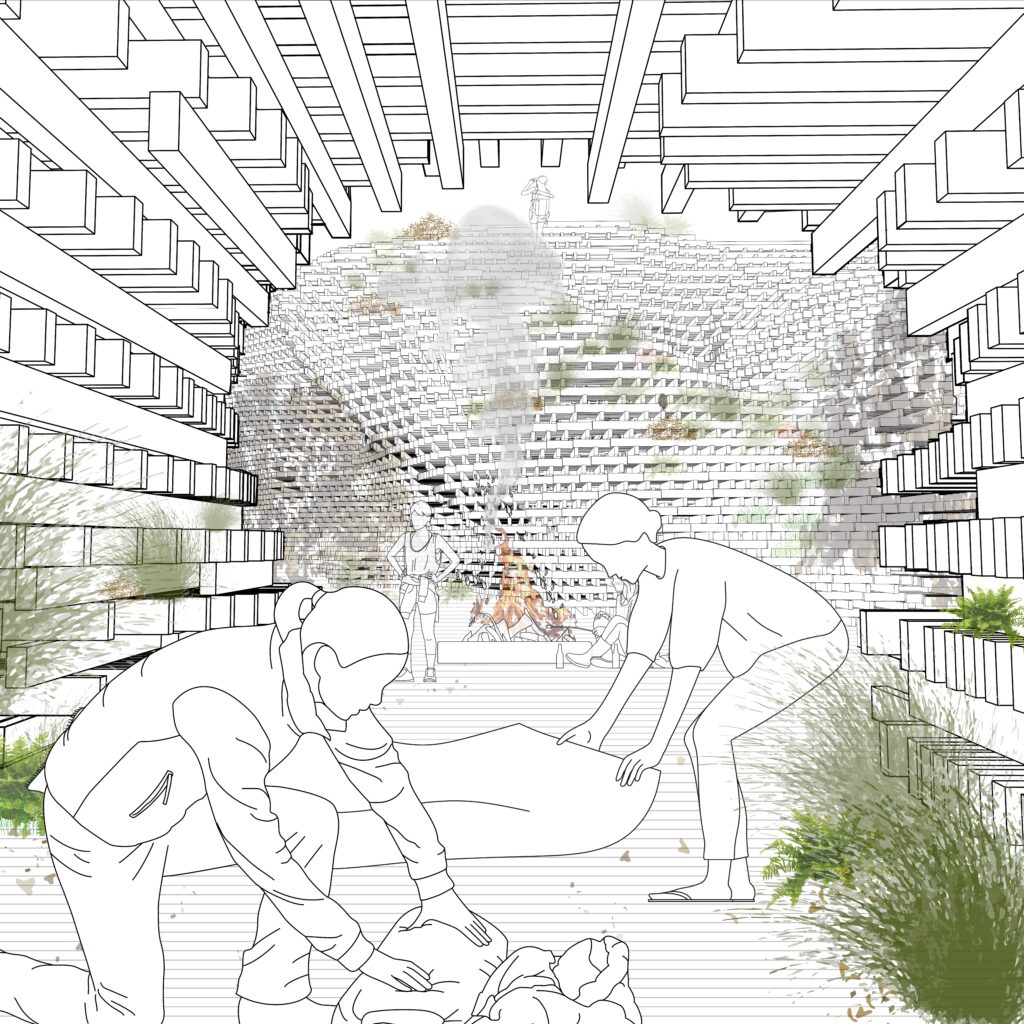
Entry and Service:
campGROUND(s) adapts an entry from the suburban neighborhood using a foreclosed home. This space is transformed into a service space that allows for a lodge-like entrance sequence and provides space for campGROUND(s) showers and restrooms just like any other day use or recreation sites.
